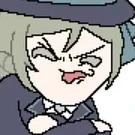-
Posts
63 -
Joined
-
Last visited

Yumso replied to Yumso's topic in General Nihonto Related Discussion

Yumso replied to Yumso's topic in General Nihonto Related Discussion

Yumso replied to Yumso's topic in General Nihonto Related Discussion

Yumso replied to Yumso's topic in General Nihonto Related Discussion

Yumso replied to Ronald Aguirre's topic in Translation Assistance

Yumso replied to JeffinVA's topic in Military Swords of Japan

Yumso replied to lorn9800's topic in Auctions and Online Sales or Sellers

Yumso replied to lorn9800's topic in Auctions and Online Sales or Sellers

